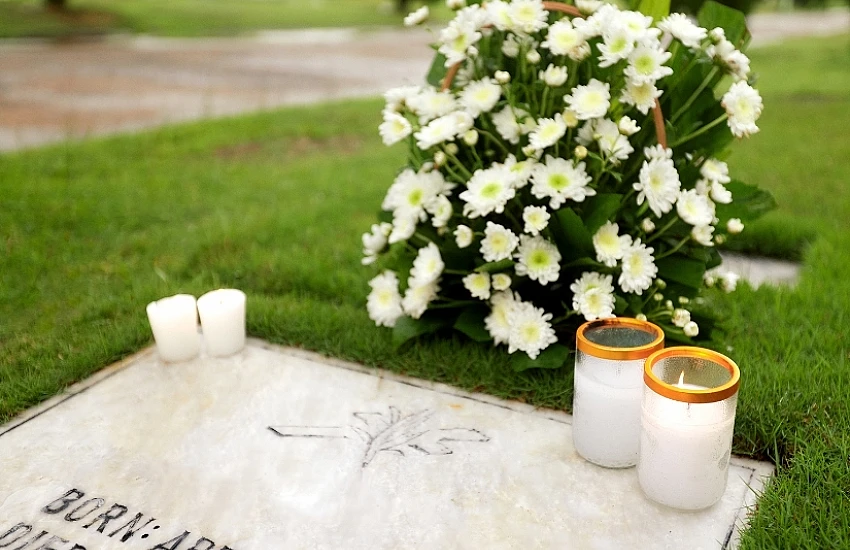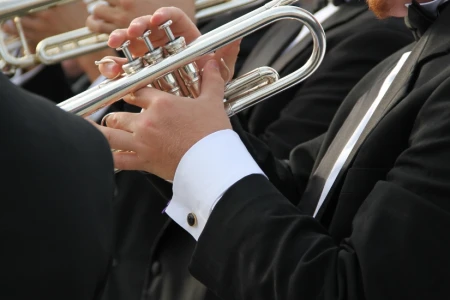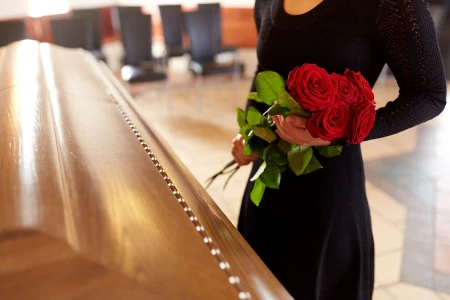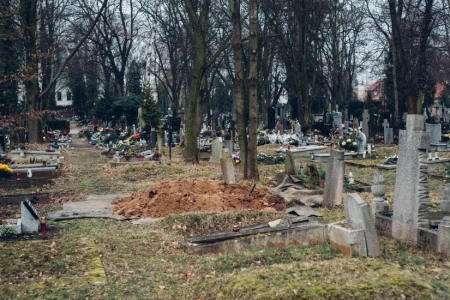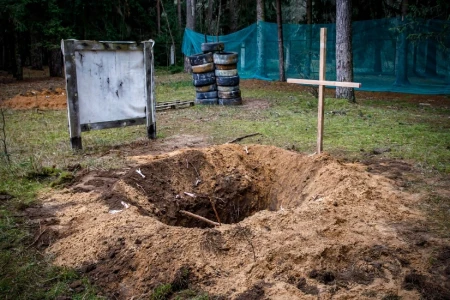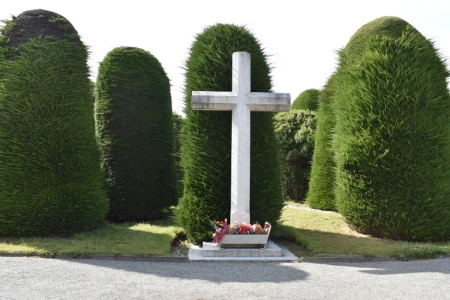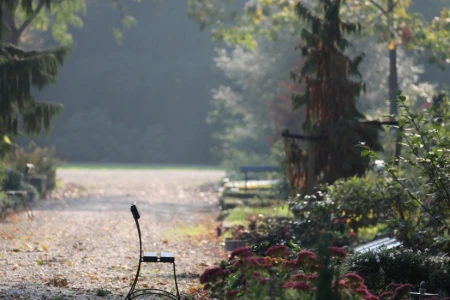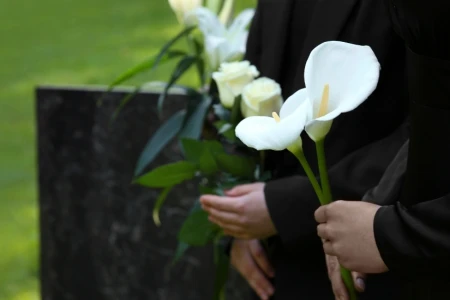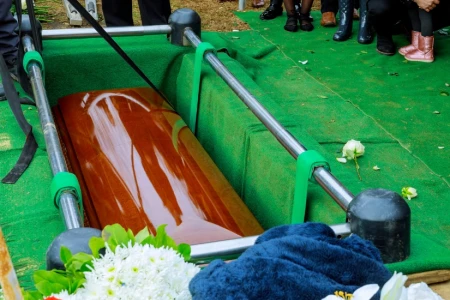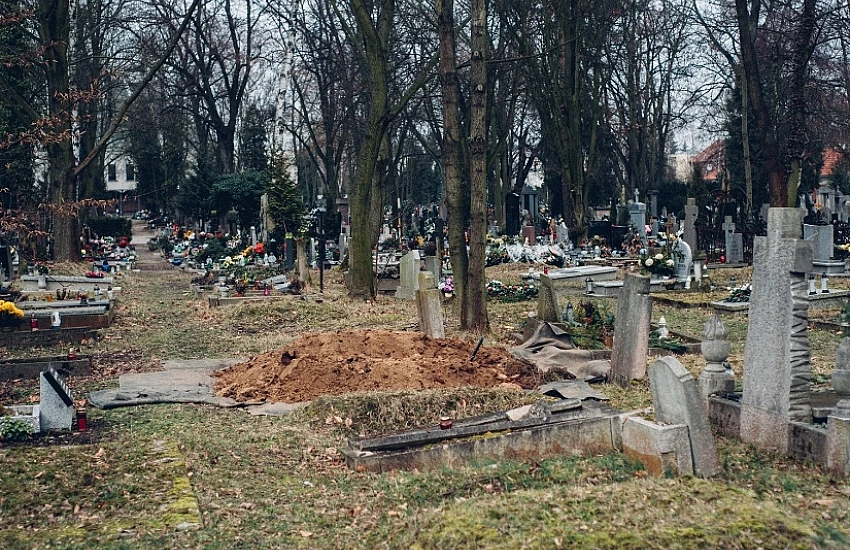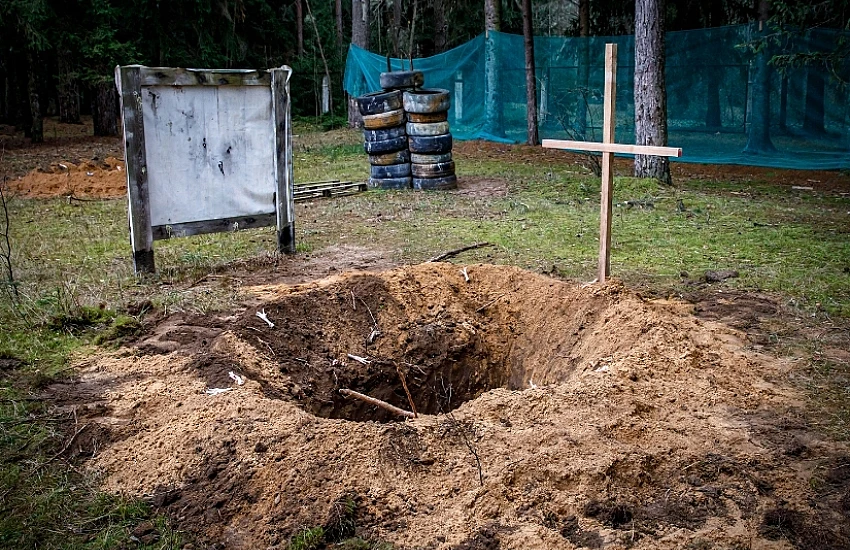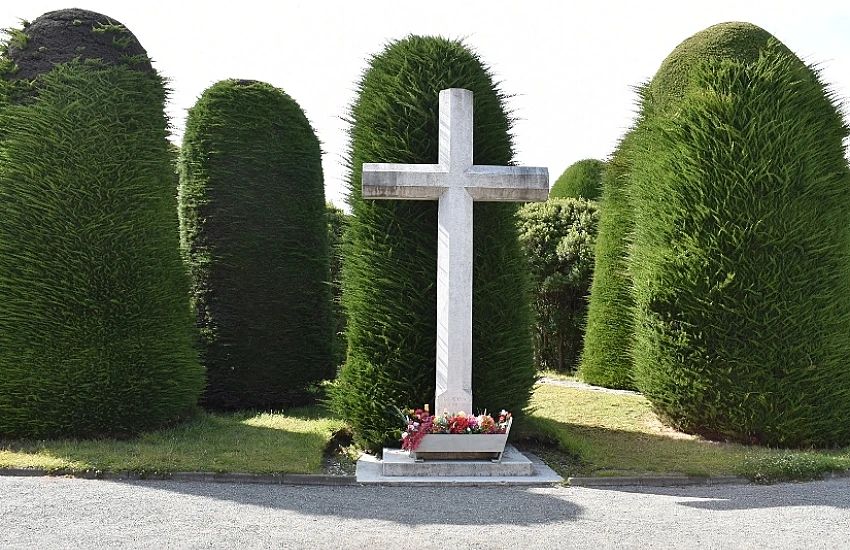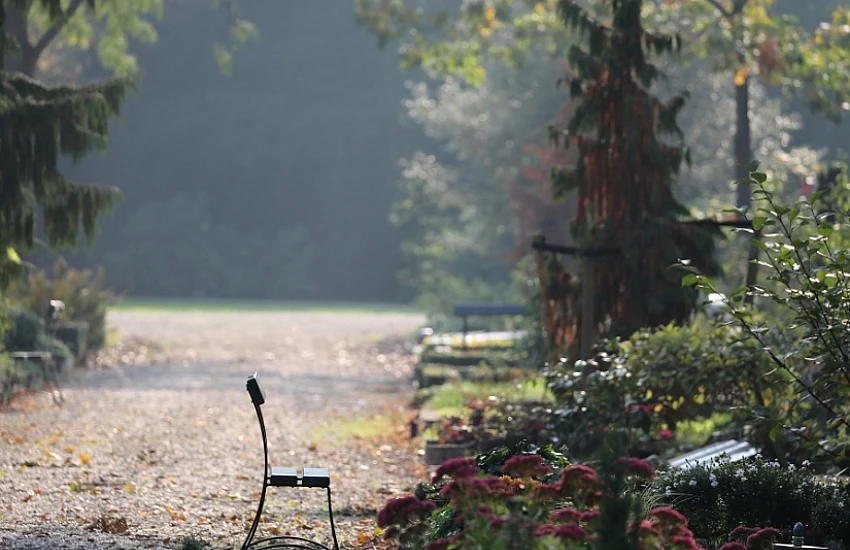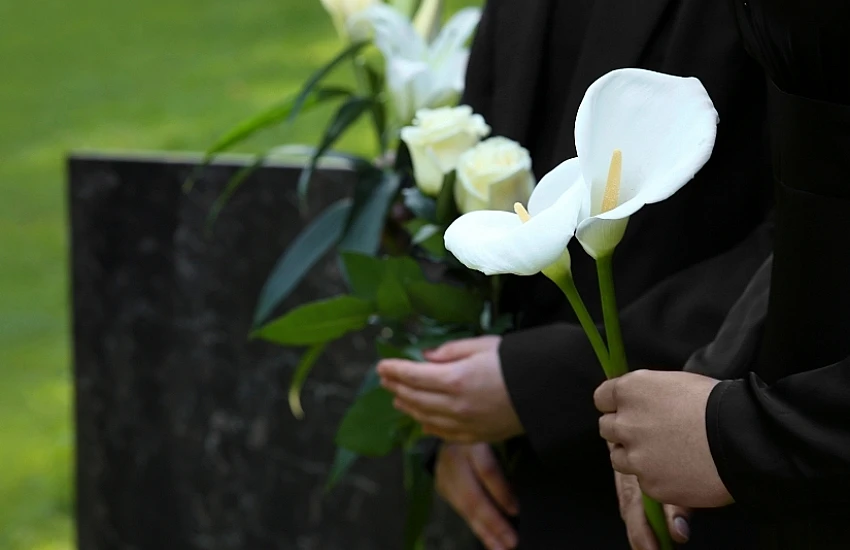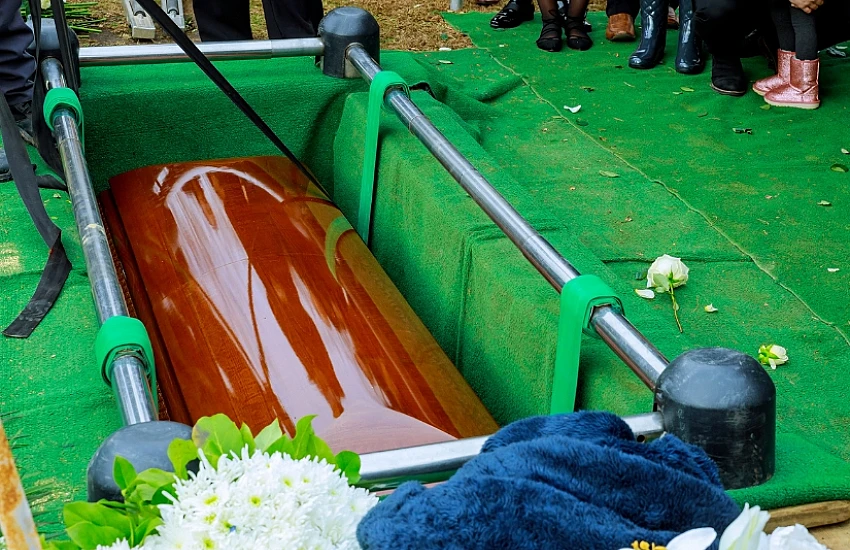Table of Contents
- Why Is the Choice of Burial Material Important?
- 1. Characteristics of Traditional Earth Graves
- 2. Characteristics of Concrete Graves
- 3. Comparing Burial Materials: Concrete vs. Burial Shrouds
- 4. Aesthetics of Earth and Concrete Graves
- 5. Cost Comparison: Concrete vs. Burial Shrouds
- 6. Environmental Impact of Concrete and Burial Shrouds
- Final Thoughts
Choosing the right burial site for a loved one is a deeply significant decision that carries both practical and symbolic importance. Among the most common options are traditional earth graves and modern concrete graves, which differ not only in material but also in durability, aesthetics, and environmental impact. Each of these burial types has its unique advantages and potential drawbacks, which should be carefully considered when planning a funeral. In this article, we will explore the key differences between earth graves and concrete graves, discussing how material choice affects burial site durability, visual appeal, and protection against external factors. We will also examine the ecological aspects of each option, which are becoming increasingly important for those seeking more natural and biodegradable solutions. Whether your priority is aesthetics, practicality, or environmental responsibility, understanding these burial choices can help you make a well-informed decision.
Why Is the Choice of Burial Material Important?
Durability and Protection of the Burial Site
The durability of burial materials determines how long a grave will remain intact. Concrete is a solid, long-lasting material that can endure for decades, offering increased structural stability. Concrete graves are particularly resistant to changing weather conditions and mechanical damage, reducing the risk of grave deformation or collapse.
On the other hand, earth graves—especially those lined with biodegradable fabric—are more susceptible to environmental influences. Natural materials, such as burial shrouds, decompose faster, aligning with ecological values but resulting in a shorter-lasting grave structure. For many, this natural decomposition process symbolizes a return to nature and is an essential part of the burial philosophy.
Aesthetic and Cultural Considerations
The material used in a burial site significantly impacts its appearance and symbolic meaning. Concrete, while modern and highly durable, may not always meet the aesthetic expectations of those seeking a more natural burial environment. In contrast, earth graves allow for natural decorative elements, such as plants and stones, creating a more organic and harmonious setting.
In many cultures, traditional earth burials represent a return to the soil and the cycle of life and death. This preference for natural burial reflects deep-rooted traditions and spiritual beliefs. The choice of grave aesthetics should align with the deceased’s personal values and their family's wishes.
Environmental Impact
A growing number of people consider the ecological implications of burial choices. Concrete production generates significant amounts of carbon dioxide, making it less environmentally friendly. While concrete graves offer longevity, they remain in the ground for decades, potentially affecting the local ecosystem.
Conversely, biodegradable shrouds present a more sustainable option. Natural burial materials decompose quickly, leaving no long-term footprint in the soil and contributing to ecological balance. Choosing eco-friendly burial solutions can help minimize the funeral’s environmental impact.

1. Characteristics of Traditional Earth Graves
Definition of an Earth Grave
Earth graves are burial sites excavated without reinforced concrete structures. They represent one of the oldest forms of burial, used across cultures for centuries.
Traditions and History of Earth Burials
Earth burials have deep cultural and historical roots, emphasizing a close connection to nature. Throughout history, they have been the primary method of burial, reinforcing the concept of human return to the earth. In some religious traditions, such as Judaism, burial in the earth is considered the only appropriate funeral practice.
Symbolism of Earth Graves
For many, an earth grave symbolizes the cycle of life and death, reinforcing the belief in a natural return to the earth. The surrounding soil enables the body’s natural decomposition, making this an essential choice for those seeking an environmentally conscious burial.
Advantages and Disadvantages of Earth Graves
Earth graves are generally more affordable and environmentally friendly but offer less durability compared to concrete graves. They may require more frequent maintenance; however, when finished with natural elements, they provide a peaceful and harmonious final resting place.

2. Characteristics of Concrete Graves
Definition of a Concrete Grave
A concrete grave is a burial site reinforced with concrete, offering protection against external conditions and structural stability. It is a common choice in modern funeral practices.
Concrete as a Funeral Material
Concrete is valued for its strength and durability, making it a preferred material for constructing burial sites resistant to environmental factors, reducing maintenance needs.
History and Development of Concrete Graves
Advancements in construction technology have enabled the development of concrete graves that are more resistant to weather conditions and moisture. They are particularly popular in regions where climate challenges require sturdy burial structures.
Symbolism and Modern Appeal
Concrete graves symbolize durability, stability, and remembrance. They are chosen by those who appreciate modernity and wish for a burial site that will last for generations. Concrete represents resilience and innovative funeral solutions.
Advantages and Disadvantages of Concrete Graves
Concrete graves are more expensive, but their durability reduces long-term maintenance requirements. They offer excellent protection against external conditions, although their environmental impact is higher than that of earth graves.

3. Comparing Burial Materials: Concrete vs. Burial Shrouds
Characteristics of Burial Shrouds
Biodegradable burial shrouds are a natural choice, making them an eco-friendly alternative. While earth graves lined with shrouds may not last as long as concrete ones, they promote faster and more natural decomposition.
Eco-Friendly Properties of Burial Shrouds
Burial shrouds contribute to environmental sustainability by decomposing quickly, in line with eco-conscious burial traditions.
Durability of Concrete vs. Burial Shrouds
Concrete offers superior durability, while burial shrouds are more environmentally responsible. Each material serves different needs and values.
4. Aesthetics of Earth and Concrete Graves
Aesthetic Considerations for Earth Graves
Earth graves blend naturally with their surroundings, often adorned with plants and natural elements, creating a serene and organic resting place.
Aesthetic Considerations for Concrete Graves
Concrete graves allow for various finishing options, including polished surfaces, marble-like designs, and decorative plaques, offering customization opportunities.
Personalization of Burial Sites
Both types of graves can be customized with unique decorations, ensuring a meaningful and personal tribute to the deceased.

5. Cost Comparison: Concrete vs. Burial Shrouds
Cost of Burial Materials
Concrete is a more expensive material, affecting overall funeral costs. However, its durability reduces long-term maintenance expenses.
Burial shrouds, being biodegradable and simple, are a more affordable option. However, their shorter lifespan may lead to additional upkeep costs over time.
Preparation and Construction Costs
Constructing a concrete grave requires more labor and materials, making it a pricier and more complex process. Earth graves, particularly those using burial shrouds, involve less preparation and are more budget-friendly.
Maintenance and Upkeep Considerations
Concrete graves require minimal upkeep due to their durability, whereas earth graves may need more frequent maintenance due to natural environmental changes.

6. Environmental Impact of Concrete and Burial Shrouds
Decomposition Process and Sustainability
Burial shrouds decompose quickly, integrating seamlessly with the ecosystem. This aligns with eco-friendly burial ideals.
Conversely, concrete, while durable, has a significant environmental footprint due to its production and long-lasting presence in the soil.
Impact of Concrete on the Natural Environment
Concrete’s production consumes considerable natural resources and contributes to pollution, making it a less sustainable option for environmentally conscious individuals.
Final Thoughts
Choosing between an earth grave and a concrete grave depends on various factors, including aesthetics, durability, environmental impact, and budget. Understanding these aspects helps families make a decision that aligns with their values and practical needs.

